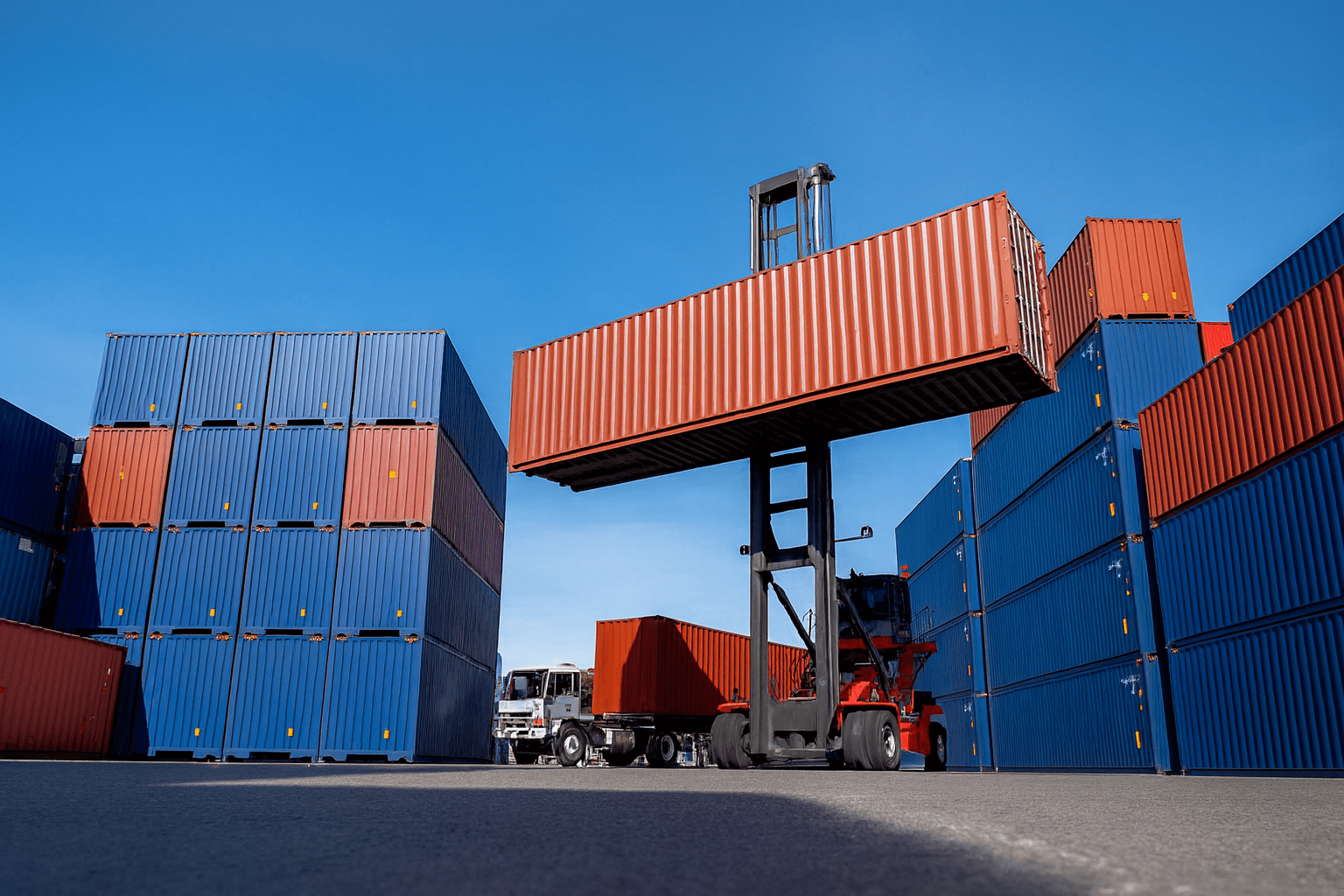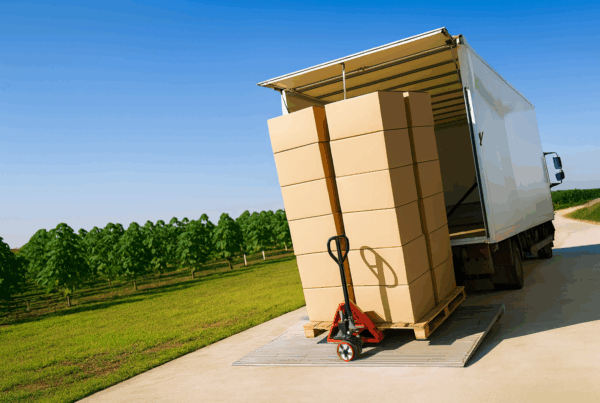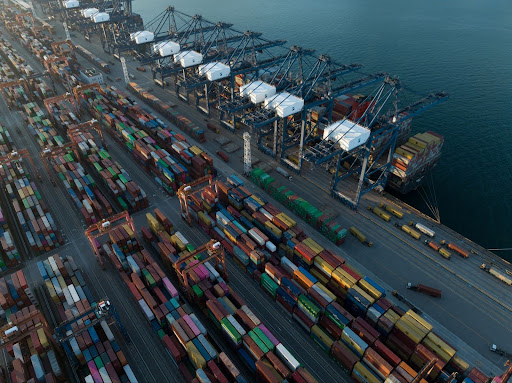Selecting the right shipping container dimensions is essential for efficient cargo planning in today’s intermodal freight environment. The container size you choose can significantly affect your costs, regulatory compliance, and overall shipping efficiency.
At Trans-Inter Logistik, we understand how overwhelming the process of selecting a container can be, especially for businesses new to international freight. In this guide, we’ll explain standard and specialized shipping container sizes. Additionally, we’ll help you choose the right one based on your cargo, budget, and destination!
Why Choosing the Right Shipping Container Size Matters
1. Maximize Space, Minimize Cost
Using the right container helps avoid paying for unused volume or incurring overweight fees. Matching cargo to interior dimensions and pallet sizes boosts loading efficiency and reduces shipping costs.
2. Meet ISO and Safety Standards
All intermodal containers used internationally must follow ISO 668 standard sizes and display a valid CSC Plate. Features like corner castings, correct gauge, and compliant door openings ensure safety and acceptance across intermodal transport systems. This avoids delays, reloading fees, or rejection at terminals
3. Protect Cargo and Ensure Durability
Mismatched cargo-to-container ratios can cause shifting, leading to cargo damage. Correct sizing allows better bracing, stacking with corner castings, and secure transit via twistlock mechanisms on railway flatcars, sea containers, or roll-off trailers.
Simplify Your Shipping Process with Trans-Inter Logistik
Standard Shipping Container Dimensions for Global Freight
20-Foot Container (20’ GP)
Often called the ISO 20-foot container or Conex box, the 20-foot standard container is one of the most common in the shipping industry. It’s ideal for transporting heavy cargo thanks to its excellent payload-to-volume ratio.
- Exterior Dimensions: 20’ (length) x 8’ (width) x 8’6” (height)
- Interior Dimensions: Approx. 19’4” x 7’8” x 7’10”
- Payload Capacity: Up to ~28,000 kg
- Cubic Capacity: Around 33.2 m³ (1,172 ft³)
- Common Uses: FCL, LCL, heavy goods, and storage applications
- TEUs: 1 (Twenty-foot Equivalent Unit)
Industry-standard 20-foot containers are CSC-Plate certified and weather tight. They feature marine-grade wood flooring, gaskets, and heavy-duty steel doors with locking rods for secure transport.
40-Foot Container (40’ GP)
The ISO 668 standard 40-foot container is the go-to for global freight. It’s twice the container length of the 20’, making it ideal for volume-heavy goods like palletized cargo or retail deliveries.
- Exterior Dimensions: 40’ x 8’ x 8’6”
- Interior Dimensions: Approx. 39’5” x 7’8” x 7’10”
- Payload: Up to ~26,000 kg
- Cubic Capacity: Around 67.7 m³ (2,389 ft³)
- Common Uses: International shipping, large commercial loads, warehouse storage
These containers are often double-stacked on railway flatcars or container ships, contributing to efficient containerization in global trade.
40-Foot High Cube Container (40’ HC)
High cube containers are similar to the 40’ GP but offer an extra foot of interior height, providing better volume/capacity for bulky goods with lower weight.
- Exterior Dimensions: 40’ x 8’ x 9’6”
- Interior Height: Approx. 8’10”
- Payload: Similar to 40’ GP (~26,000 kg), but with more vertical space
- Cubic Capacity: About 76.4 m³ (2,700 ft³)
High cubes are popular for transporting items like mattresses, furniture, or reefer containers with built-in cooling systems. Their added height requires awareness of clearance regulations during inland transit.
45-Foot High Cube Container
The 45-foot high cube is a specialized container primarily used by major shipping companies for long-haul intermodal transport where container capacity optimization is essential.
- Exterior Dimensions: 45’ x 8’ x 9’6”
- Interior Dimensions: Approx. 44’4” x 7’8” x 8’10”
- Payload: Slightly lower due to its longer frame, often around ~27,000 kg
- Volume: Up to 85 m³ (3,000 ft³)
While excellent for light but voluminous cargo, these containers are less common at smaller terminals. They might require special handling or gooseneck tunnels for compatibility with certain roll-on/roll-off ships and chassis. These intermodal shipping containers, regulated by standards such as ISO 668 and marked with ISO 6346 reporting codes, are vital assets in freight operations across Canada and globally.
Let’s Talk About Your Shipping Needs!
Specialized Shipping Container Sizes and Types
While standard containers like 20’ and 40’ GPs are designed for most general cargo, some shipments require specialized container types due to their size, shape, temperature sensitivity, or handling requirements. These containers support unique cargo needs that cannot be accommodated by typical intermodal containers.
Flat Rack Containers
Flat racks are designed for oversized or irregularly shaped cargo that won’t fit within standard container walls.
- Structure: No side walls; fixed or collapsible end walls
- Common Uses: Construction equipment, generators, machinery, boats
- Key Features: Easy crane access; robust for heavy-duty loads
Open Top Containers
Open top containers are ideal for top-loaded freight, especially when lifting equipment like a crane is needed for loading and unloading.
- Structure: Solid side walls with a removable tarpaulin or hard top
- Common Uses: Pipes, logs, machinery, bulk minerals
- Key Features: Lash rings, door opening flexibility, and weather-resistant coverage
Refrigerated Containers (Reefers)
Reefer units are essential in the cold chain logistics industry, designed to maintain a controlled internal temperature during transport.
- Structure: Insulated with a built-in cooling system
- Available Sizes: 20’ and 40’ ISO types
- Common Uses: Food, pharmaceuticals, flowers, temperature-sensitive goods
- Key Features: Meets ISO standards, suitable for long-haul sea or rail freight
Tank Containers
ISO tank containers are used for transporting liquids, chemicals, and food-grade substances safely across long distances.
- Structure: Cylindrical stainless steel tank within a rectangular steel frame
- Common Uses: Chemicals, wine, milk, fuels
- Key Features: Built to ISO 6346, features stainless steel interior walls, safety valves, and pressure gauges
These specialized container types are critical tools in the freight industry, offering solutions where standard box containers fall short. Whether you’re moving cargo nationally or through international ports, matching your shipment with the right container type ensures efficiency, safety, and compliance with global ISO standards.
Ensure Your Cargo Moves Efficiently
Intermodal Container Sizes: A Quick Comparison
| Container Type | Length (ft) | Height (ft) | Interior Volume (m³) | Payload (kg) | Typical Use |
| 20’ Standard (GP) | 20 | 8.6 | 33.2 | 28,000 | General cargo, heavy goods |
| 40’ Standard (GP) | 40 | 8.6 | 67.7 | 26,000 | Volume-heavy goods, palletized cargo |
| 40’ High Cube (HC) | 40 | 9.6 | 76.4 | 26,000 | Bulky goods, furniture, high-volume light cargo |
| 45’ High Cube | 45 | 9.6 | 85 | 27,000 | Long-haul, large volume shipping |
| Flat Rack | Varies | Open | N/A | High capacity | Oversized cargo (machinery, vehicles) |
| Open Top | 20 | Open | N/A | Standard | Top-loaded bulk goods (pipes, logs) |
| Reefer | 20 | 8.6 | Varies | Varies | Perishables (food, pharma) |
| Tank Container | 20 | Frame-based | N/A | Liquid-specific | Liquids (chemicals, wine, milk) |
Full Container Load (FCL) vs Less than Container Load (LCL)
Full Container Load (FCL) and Less than Container Load (LCL) are two maritime transport methods suited to different logistical needs. FCL involves reserving an entire container for a single shipper, even if the container is not completely full, which allows for faster, safer transport with fewer handling operations.
In contrast, LCL allows multiple shippers to share space in the same container, making it advantageous for small quantities of goods, although it typically results in longer transit times and a higher risk of damage due to the consolidation and deconsolidation processes. The choice between FCL and LCL mainly depends on the shipment volume, budget, urgency, and the nature of the goods being transported.
How to Choose the Right Cargo Container Dimensions
1. Understand Your Cargo Requirements
Consider the type, weight, and dimensions of your cargo. For dense freight, a dry container (20’) might suffice, while voluminous goods tend to require a high cube or open side container. Specialized needs like liquids or perishables call for ISO tank containers or reefers.
- Assess volume/capacity
- Match to intermodal container dimensions
- Consider if cargo needs door open access or tarpaulin sheet coverage (for hard top or open top units)
2. Weigh Cost vs. Capacity
Using a freight rate calculator can help estimate cost per cubic meter or gross weight. Oversizing can lead to wasted space, while undersizing can cause load inefficiencies or violate cargo weight regulations.
- Avoid overpaying for one trip or Conex shipping containers when a standard box would suffice
- Compare options like half-height containers for mining or double-door containers for palletized loads
3. Ensure Regulatory Compliance
All containers used in global trade must be cargo-worthy and conform to international manufacturing standards. This includes being fitted with a CSC plate, ISO type codes, and compliant with agencies like the International Maritime Organization (IMO) and the Bureau International des Containers (BIC).
- Check for wind & water-tight status
- Ensure the container’s check digit and container owner info align with ISO 6346 reporting mark
- For U.S.-bound shipments, adhere to shipping weight regulations set by agencies like the FMCSA
4. Consider Destination and Handling Requirements
Inland transport, port restrictions, and double-stacked containers on railway flatcars can influence your choice. If you’re shipping via air cargo, lighter builds with aluminum floors might offer cost savings.
- Ports like Montreal and Vancouver have specific height and weight limits
- Choose containers with heavy-duty construction and features like cargo doors, Cor-ten steel, and marine-grade paint for harsh environments
Have Cargo to Move but Not Sure Where to Start? We’re Here to Help!
Frequently Asked Questions About Shipping Container Sizes
Can you stack different container sizes?
Yes, but only if they’re ISO-compliant and use corner castings and a twistlock mechanism. Typically, a 40’ won’t stack securely with a 20’ unless adapters or platforms are used.
Do all ports handle all container sizes?
Not always. Major ports support most standard and high cube containers, but 45-foot or specialized types can face handling or space restrictions.
How are oversized loads handled?
They go into flat racks or open top containers, often moved via crane. These require special permits, routing, and may be limited by gross weight or port infrastructure.
Can I ship a small load without filling a whole container?
Yes, you can use LCL (Less than Container Load) shipping. Your goods share space in a container with shipments from other companies. It’s ideal for smaller volumes or first-time shipments.
Trans-Inter Logistik: Coordinating Freight with Purpose
At Trans-Inter Logistik, we provide freight transportation solutions that help businesses move goods efficiently across Canada, the U.S., Mexico, and international markets. With over 25 years of experience, we coordinate shipments across road, air, sea, and intermodal networks, tailoring our approach to meet the unique needs of each client.
Whether you’re shipping full truckloads, managing cross-border freight, or navigating global logistics, we’re here to make the process clear, dependable, and cost-effective.
Start Your Freight Project with Confidence







